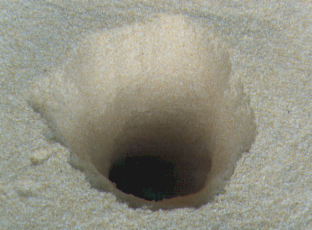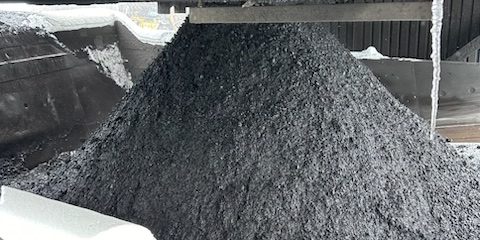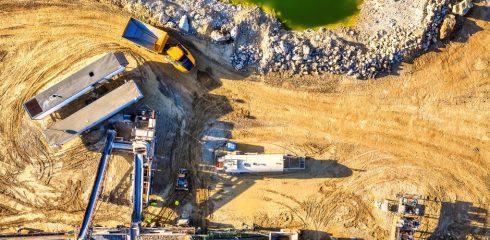
The Need
Knauf Fiber Glass blends glass batch in an aerating blender and then pneumatically conveys it to a bin above each of several furnaces. When the original furnace feed bins were kept full, few handling problems were experienced. However, when a bin emptied due to upstream mechanical problems with the batching system, stable [popover image=”/your-need/poor-flow/hopper-flow-obstruction-ratholing/” link_text=”ratholes” title=” ” content=”A costly no-flow problem” direction=”right”] formed above each of the three chute legs, resulting in occasional loss of feed to the furnace.
The Solution
Jenike & Johanson visited the plant to observe the operation of the bins, run laboratory tests on the glass batch to determine its flow properties, and make functional design recommendations for modifications to alleviate the problems. Jenike & Johanson also performed the design and engineering of the final modifications. Knauf Fiber Glass blends glass batch in an aerating blender and then pneumatically conveys it to a bin above each of several furnaces. When the original furnace feed bins were kept full, few handling problems were experienced. However, when a bin emptied due to upstream mechanical problems with the batching system, stable ratholes formed above each of the three chute legs, resulting in occasional loss of feed to the furnace.
As the ratholes collapsed, the material fluidized and flushed through the chutes to the furnace. Fine material was then able to move, resulting in a high percentage of fines in the feed to the furnace. The fines typically melted at a lower temperature than the normal batch and produced a glass with radically different physical properties. Each of these changes resulted in a major disruption to the manufacturing process, with the disruptions lasting for about 24 to 36 hours.
It was determined to change the bin’s flow pattern to [popover image=”/your-need/poor-flow/hopper-flow-pattern-mass-flow/” link_text=”mass flow” title=” ” content=”Discharge pattern occurring in silo, bin, bunker, or hopper” direction=”right”] from [popover image=”/your-need/poor-flow/hopper-flow-pattern-funnel-flow-cohesive-material/” link_text=”funnel flow” title=” ” content=”Discharge pattern occurring in silo, bin, bunker, or hopper” direction=”right”] which had developed due to the shallow hopper wall angles and surface finish. A new hopper section was built with steeper and smoother walls. These modifications eliminated ratholes and stagnant regions, developed a first-in-first-out flow sequence, and minimized segregation .
The Result
The modifications met all of Knauf’s expectations. Ratholing was eliminated, which resulted in a much more uniform furnace feed.






